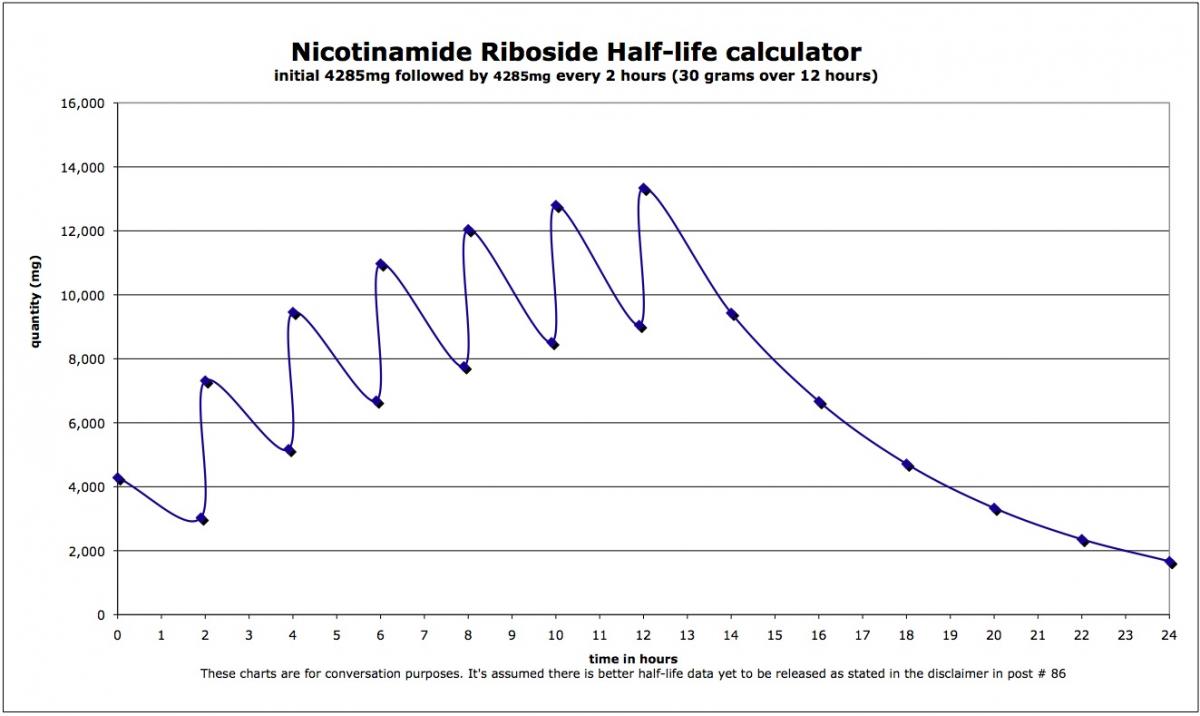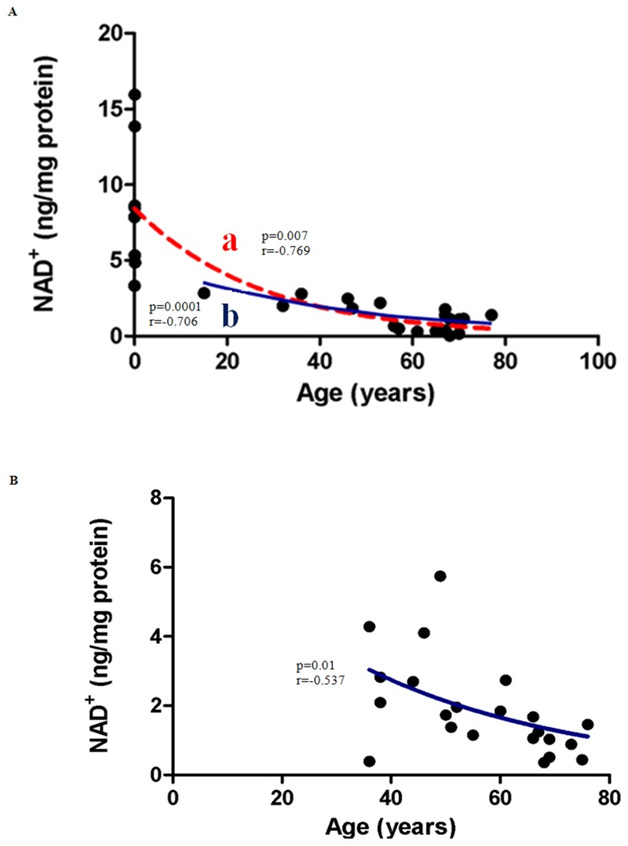What the researcher said to me is that in the last year they realized a few things: oral administration is not ideal, to reach the same effects they had on the mice study you should take 30 grams/day, now they're experimenting by using sub-lingual administration (as Bryan_S is already doing if i remember correctly).
Astor,
Always good to hear from you. A happy and heathy new year to you.
The comments they gave you are sort of confusing. I feel there are a lot of researchers waiting for the current 6-week study to conclude before moving forward. This in fact may be a prudent stance especially when working with people who have Mitochondrial syndrome.
The Brenner study suggested a NAD plateau of a 50% NAD rise was reached along the dosage scale they tested 100mg, 300mg and 1000mg. "The oral presentation and poster presented data which indicate that single doses of NIAGEN® NR can elevate the co-enzyme NAD+ in the blood by as much as 2.7-fold. In the first-in-humans clinical trial which involved dosing twelve healthy adult subjects, the group showed that blood cell NAD+ increased with single 100 mg, 300 mg and 1 gram doses of NIAGEN® NR. Average maximal increases in blood NAD+ were approximately 30% at the 100 mg dose and approximately 50% at the higher doses. Increases in blood NAD+ tended to be sustained for longer times at higher doses." So how are we to interpret these results if another researcher is looking at 30 grams per day?
If 300mg's and 1 gram dosages both produced a 50% NAD rise this to me would suggest a metabolic saturation point was reached. Personally I don't see this as an immovable limit and feel this hurdle can be crossed and stretched.
Now this was a one time dosage study and it can be assumed there are several barriers such as oral absorption, cell membrane transport and the rate at which NRK1 and NRK2 can add a phosphoryl group to the molecule to produce nicotinamide mononucleotide. We also have to consider there may be a NAMPT feedback inhibitor depending on the utilization rates of the NAD+, in fact I would expect the NAD+ to NADH ratio would put on the breaks. These are all rate limited processes but I think the Cell Membrane Pnuc transporters that catalyze cellular uptake of (Nr) is the first big rate limited hurdle.
Now I tend to "believe" the cell does not un-necessarily produce its transporters/catalysts in excess beyond its regular day to day needs which the Brenner one time dose study did not address. However if a subject found him or herself in the enviable situation of finding a reliable source of Nicotinamide Riboside it "might" produce these enzymes in greater quantity over time with nutritional and exersize conditioning to produce a consistent supply with cellular demand. These are the sorts of questions we all look forward to hearing the answers to after the 6-week study.
I'm sure there is much more to this data from the Brenner study we need to consider. However since we ran the Nicotinamide Riboside half-life calculations, 30-grams per day may exceed our bodies ability to process such amounts which would be about 2.5 grams per hour for 12 hours or an intravenous drip of 1.25 grams per hour around the clock. I'm also pretty certain much of it would be eliminated thru the kidneys. So I don't think the single dose study suggested the changes that might occur after weeks of regular supplementation and adaptation.
We also know the crossover from Mouse to Human dosages isn't a straight scale-up per kilogram. We had discussed this on one of our previous NR threads when the body surface area (BSA) normalization method was tabled. So my point is I hope the figure they gave you is off by at least one decimal point but they may very well want to see the results of mega dosing but I expect they would do this with a fairly heathy subject.
My only concern at these levels would be on the elimination side of the equation, especially after reading about mitochondrial disease and kidney function which appears to be rather common. As a group we can safely discuss these issues because few of us could afford to venture into 30-grams per day as this would be the equivalent of 4-retail bottles per day.
Below is what 30-grams per day orally might look like considering a 4 hour half-life. Entertainment purposes only. But if the kidneys were compromised I would expect the peaks to be higher and the elimination curve much slower, new territory to be sure.

Edited by Bryan_S, 09 January 2016 - 08:46 AM.
































 This topic is locked
This topic is locked
























